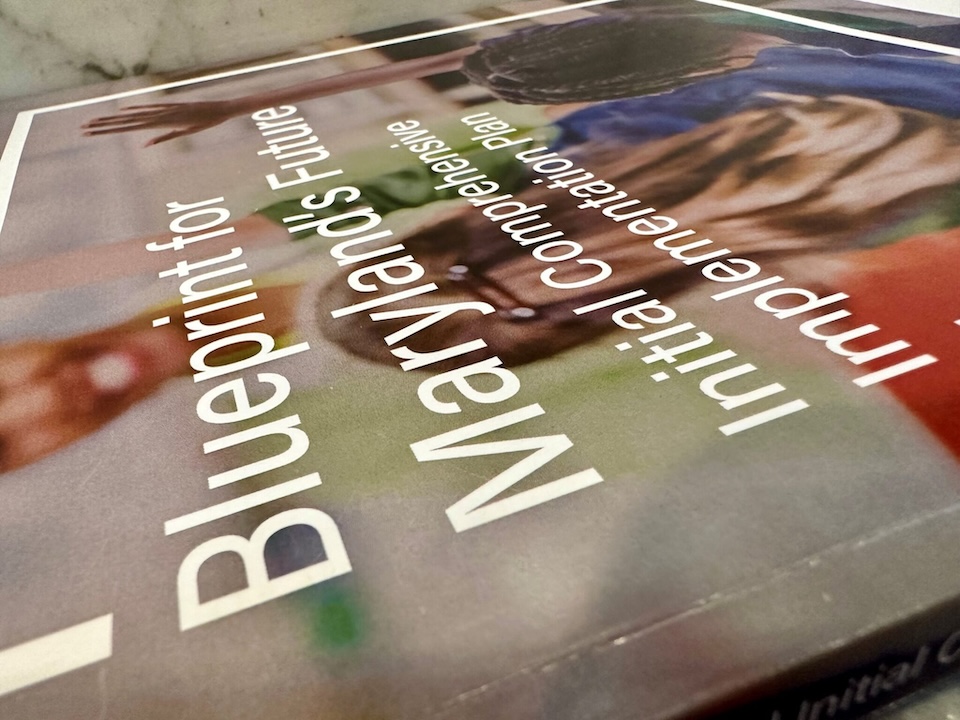The board overseeing the state’s multibillion-dollar education reform plan has some suggestions for state lawmakers when they convene in January for the 2026 legislative session.
The Blueprint for Maryland’s Future Accountability and Implementation Board approved several legislative recommendations Thursday that include consolidating the number of reports from local school districts, modifying and expanding options for teacher programs and “permanently” authorizing eligible schools that receive concentration of poverty grants to get funding for fine arts programs such as music, arts and dance.
The chosen recommendations highlighted in the 15-page document are in bold type and focus on the Blueprint’s five pillars, or priorities, that deal with early childhood education, high-quality and diverse teachers and leaders, college and career readiness, more resources for students to be successful, and governance and accountability.
One suggestion requests the legislature extend the plan to “hold harmless” funding for multilingual learners, students in poverty and those in special education. That provision, which protects those students from any per pupil funding cuts that come along, is currently set through fiscal 2027; the board wants it extended through fiscal 2028.
The board also recommends the legislature maintain the state’s current methodology of how it counts low-income students.
The recommendations are based on a report last month from the Governor’s Office for Children, which assessed the state may have fewer students in poverty. In other words, school districts would receive less money.
That report, based on student enrollment from the 2024-25 school year, determined at least 59% of schools across the state experienced a decrease in the number of students in poverty. Part of the state’s calculation for students in poverty includes a family’s income as well as those receiving free and reduced-price lunches in schools.
AIB Executive Director Rachel Hise said the recommendations would provide state officials with more time to conduct further analysis and assess the number of students affected.
According to an AIB legislative summary, staff recommended supporting the level funding for those students after determining that “proposed methodologies to calculate students in poverty were no more accurate than those that are currently in use. Further, the options identified impacted an overwhelming number of LEAs [local education agencies] negatively.”
Another legislative recommendation is to allow out-of-state teachers to verify at least two years of experience, versus having to take a test to prove teaching ability. This proposal is aimed at helping decrease the state’s teacher shortage.
One other recommendation deals with dual enrollment, which allows high school students to take college courses locally for free, with tuition paid for by the school district. It wants the legislature to extend statutory authority of the AIB and state Board of Education from fiscal 2027 to fiscal 2030 to require a minimum number of course a school district must offer.
When both boards held a joint meeting in September, they approved a legislative recommendation to extend another dual enrollment policy through fiscal year 2027.
The policy, which currently runs through the end of this fiscal year, allows students who are designated as college and career ready by the 10th grade to take two college courses in the fall and another two in the spring.
Students who have not meet the college and career readiness standard can still take two courses during a school year and receive additional support in English, math and other areas.
by William J. Ford, Maryland Matters
November 21, 2025
Maryland Matters is part of States Newsroom, a nonprofit news network supported by grants and a coalition of donors as a 501c(3) public charity. Maryland Matters maintains editorial independence. Contact Editor Steve Crane for questions: [email protected].




Write a Letter to the Editor on this Article
We encourage readers to offer their point of view on this article by submitting the following form. Editing is sometimes necessary and is done at the discretion of the editorial staff.